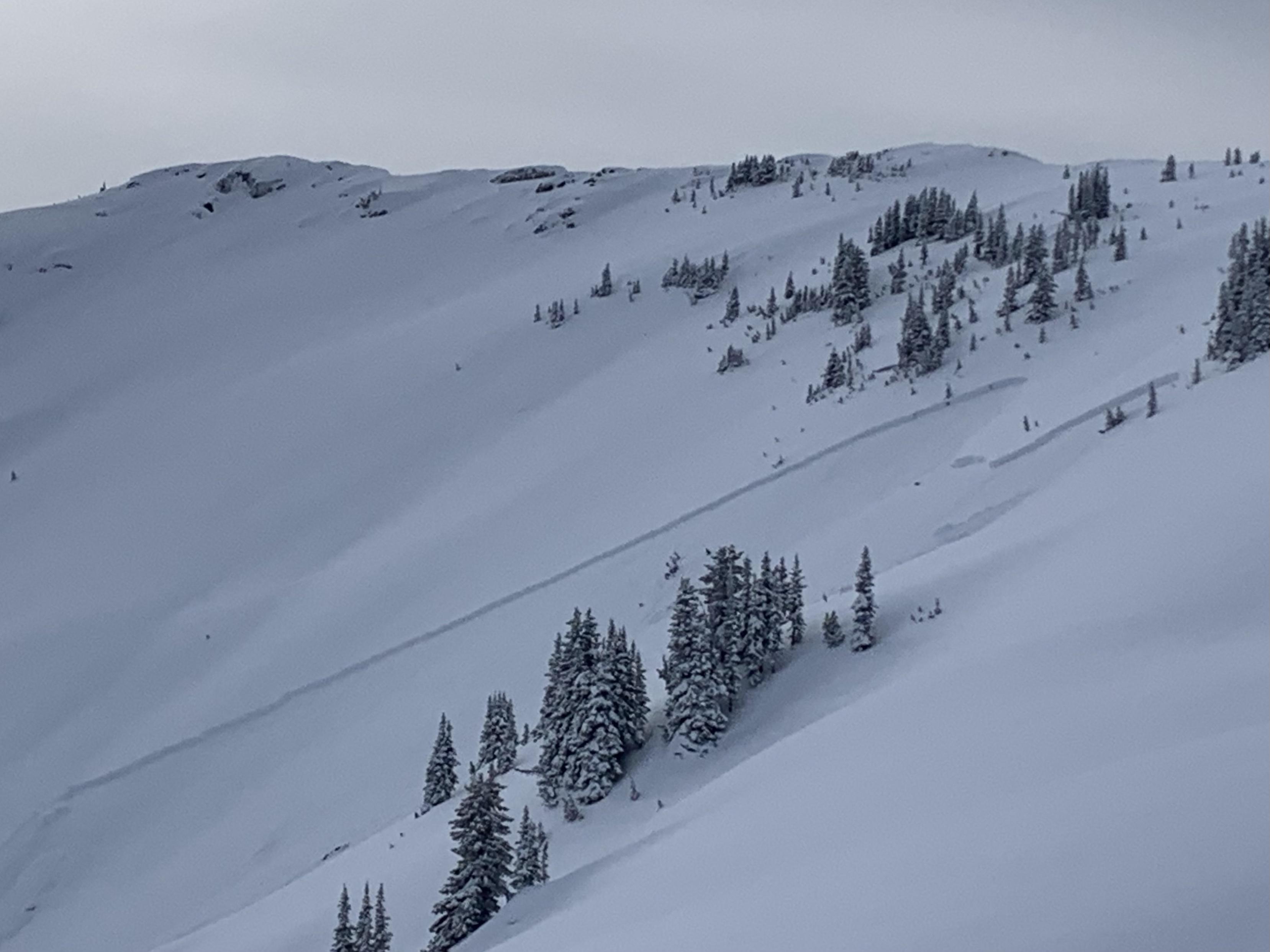Whumphs and skier remote avalanche
Selkirk Mtns, East of Revelstoke, South of Trans-Canada highway
On Friday December 29th, while skinning up 20 metres below a ridge top at about 2200m, a dreaded whumph was felt and heard by the entire party (one guide and three guests). One of the guests immediately heard and saw an avalanche about 400m away from us in steeper, convex and unsupported terrain. It was a size 2 or 2.5, on a SE aspect, 200m wide, 60cm to 1m deep and ran down into a flat terrain trap feature. Sobering to say the least. Thankfully we were on supported, lower angle terrain, with about 25m of spacing between each of us, but we could see small cracks in the snow near our uptrack... We were able to continue up to the ridge and ski down the lower angle alpine slope.
We had also experienced another whumph the previous day, skinning up a SE aspect slope at 1950m in sparce 30 degrees trees. We had dug a Rutschblock nearby with no results but had observed the November facet layer about 130-140cm down from the surface. The multiple surface hoar layers were not visible. The snowpack depth was about 160-180cm at that location. After that whumph, we immediately turned around as we couldn't find any lower angle terrain continuing up.
A few guides I have since spoken to have commented that this year's snowpack reminds them of the snowpack of 2003. That year, a widespread November rain crust with facets on top of it was the defining sliding layer. This year, we are dealing with multiple surface hoar layers and deeper down in the snowpack, a weak layer of facets combined with surface hoar and in some places a melt freeze crust, all of it formed in mid-late November. One of these upper layers fails and possibly steps downs to the deeper layers. So far, we haven't witnessed as many natural and skier triggered avalanches as we saw in 2003, but additional loading could change that picture.
I apologize for the somewhat long winded comment, but I would like to impress upon our readers that these deeper persistent weak layers tend to linger and surprise us especially when nothing happens for a while. I for one, after witnessing the avalanche I triggered with my group from so far away, will heed the warning and will be staying away from large, steep, convex and unsupported terrain for the next several weeks while staying well away from any threatening slopes above.

